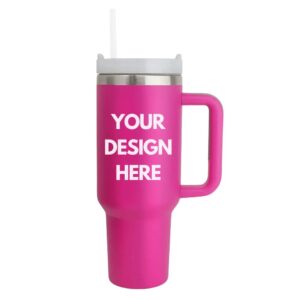Once a startup is successfully launched, achieving sustainable growth requires wise financial management and strategic resource acquisition. Doing so while maintaining optimal cash flow can be quite challenging.
Fortunately, combining Net 30 accounts and equipment financing for startups can offer substantial leverage.
This powerful combination enables startups to acquire essential tools and technologies while spreading out expenses in a manageable manner, thereby enhancing financial health and stability. Let’s see how these small business financing tools can be a game-changer on your startup’s path to success.
An Overview of Equipment Financing

Securing the right equipment forms the backbone of business operations whether it’s technology, machinery, or vehicles. Equipment financing is a strategic financing option specially tailored for acquiring essential business equipment without paying the full cost upfront. Considering the financial constraints startups face, this option helps them manage cash flow effectively.
Options Available: Loans vs. Leases
Depending on the financial strategy and long-term business goals, a startup can opt for either equipment loans or equipment leases. Startup equipment financing allows you to borrow money to purchase the equipment outright, becoming the owner once the loan is paid off. This option usually involves regular payments of principal and interest.
On the other hand, an equipment lease is akin to renting the equipment for a particular period. Once the lease term ends, the startup has the option to purchase the equipment, extend the lease, or return it. Each choice offers distinct advantages and caters to different business needs, tax benefits and liabilities, and financial plans.
Benefits of Equipment Financing
Preserves Cash Flow
By allowing the spread of the cost of equipment over time, equipment financing for startups ensures that companies can allocate working capital for payroll, R&D, marketing and other essential functions. This is particularly beneficial for startups that need to maintain liquidity to respond to market opportunities or unforeseen challenges.
Access to Necessary Tools
Equipment financing eliminates the significant delay in acquiring essential business tools, enabling startups to kickstart their operations without the full capital typically required for outright purchases. This access is crucial for staying competitive in an industry where up-to-date technology or specialized machinery is key to business operations.
Building Creditworthiness
Managing an equipment loan or lease responsibly can significantly boost a startup’s credit profile. A positive repayment history demonstrates that the business is reliable and financially responsible. This improved credit standing can be beneficial for securing future financing at more favorable terms.
Potential Tax Advantages
Typically, the interest on equipment loans and payments on leases can be deductible as business expenses.
These deductions can significantly lower the overall cost of financing and should be considered when planning the financial strategy of a startup (consultation with a tax advisor is recommended to understand the specific impacts).
Understanding these facets of equipment financing highlights its role as a powerful tool in a startup’s financial toolkit.
Understanding Net 30 Accounts
Net 30 accounts are a form of trade credit which extends a 30-day period to pay off the amount due. This type of credit is designed to help businesses manage their cash flow by allowing them to obtain necessary goods or services immediately while providing the flexibility to pay within a month.
The term “Net 30” means that the full payment is due in 30 days from the invoice date. This setup can ease the financial burden on startups, giving them breathing space to utilize their cash on hand for other urgent needs.
Applications in Daily Business Operations
Net 30 accounts are particularly useful for recurring expenditures, or even professional services like legal and accounting.
Here’s how businesses typically use Net 30 accounts:
Inventory and Supplies
Purchase stock needed for production or sales without immediate cash outlay.
Marketing and Advertising
Fund promotional campaigns to increase brand visibility and attract customers.
Operational Costs
Manage regular expenses such as utilities or software subscriptions, ensuring smooth daily operations.
Unique Advantages for Startups
Cash Flow Management
These accounts provide startups the ability to defer payments, thereby maintaining liquidity.
Credit History Building
Utilizing these credit terms responsibly helps startups establish a credit history. A strong credit profile helps in securing lower interest rates, accessing larger credit lines, and other favorable terms for future financial needs.
Supplier Relationships
Regular use of Net 30 accounts can help in building trust and good relationships with suppliers. This leads to better pricing, priority service, and more flexible payment terms over time.
Synergy Between Equipment Financing and Net 30 Accounts

Enhanced Cash Flow Management
The strategic use of startup equipment finance in conjunction with Net 30 accounts can lead to improved cash flow management. Startups can leverage equipment financing to avoid the hefty upfront costs of purchasing essential tools and machinery, while Net 30 accounts can handle ongoing operational expenses. This combination helps in distributing financial obligations over time, thus avoiding significant cash outflows at once.
Improved Credit Building Strategies
When used wisely and repaid timely, this combination contributes to building a startup’s credit profile. Regular, punctual payments of financed amounts demonstrate to credit agencies and future lenders that the business is creditworthy.
Acceleration of Growth and Revenue
Once the necessary equipment is obtained through equipment financing for startups and funds to manage business expenses through Net 30 accounts, a startup can significantly accelerate growth and revenue streams.
It can quickly respond to market demands, enhance service delivery, and increase operational capacities without the typical financial strain associated with new ventures. Ultimately, this can lead to faster growth and a stronger market position.
Real-World Application
Scenario Implementation
Consider a startup tech company focusing on developing eco-friendly household gadgets. As a part of their operation, they require advanced 3D printers and molding equipment. For this startup, equipment financing is crucial because it allows them to acquire these high-cost tools without tying up their capital.
Simultaneously, they utilize Net 30 accounts for purchasing raw materials and paying for necessary services like marketing and consultancy, facilitating a smoother operational flow without immediate financial strain.
This strategic financial planning ensures continuous production and market expansion without the burden of large, upfront cash outlays. This dual approach to financing keeps the startup agile.
Impact on Business Operations and Growth
A startup can maintain a robust production line and enhance operational efficiency. This results in timely product launches and market responsiveness.
This also supports effective cash flow management allowing the startup to
- Invest in market research and development for future products
- Enhance customer service capabilities to improve satisfaction and retention
- Explore new market opportunities with minimized financial risks
This comprehensive financial strategy not only supports day-to-day operations but also steers the startup towards sustainable growth and scalability. The increased efficiency and financial latitude can significantly boost market competitiveness and overall brand value.
Choosing the Right Equipment Financing and Net 30 Providers
Factors to Consider
When selecting Net 30 accounts or equipment financing companies for startups, consider the following crucial factors to make the right choice for your business model and growth plans.
Interest Rates and Terms
Compare different providers to find the most favorable interest rates and repayment terms.
Flexibility and Scalability
Choose services that offer flexible payment terms and scalability to accommodate your growing business needs.
Reputation and Reliability
Research providers’ reputation and financial stability to ensure they can address your immediate needs and support your business in the long term.
Additional Benefits
Look for additional benefits like deferred payments, lower down payments, or bundled services that can add value beyond the basic financing functions.
Why The CEO Creative For Net 30 Accounts
The CEO Creative’s tailored approach for Net 30 accounts supports startups in several ways:
Streamlined Processes
Simplified application process with minimal eligibility requirements makes it easier for startups to secure funds.
Growth-Oriented Services
The CEO Creative also provides services aimed at promoting business growth such as marketing and branding, which are crucial for startups looking to establish themselves in competitive markets.
Flexible Credit Options
The CEO Creative offers credit options that are adaptable to the fluctuating needs of startups, ensuring they can manage their finances more effectively without stunting their growth opportunities.
With credit lines of up to $5,500, The CEO Creative provides startups with the working capital to cover essential operating expenses or launch new initiatives. Their easy approval process and the lack of minimum limit or personal guarantee requirements make it easier for startups to qualify.
The CEO Creative understands that funding is just one piece of the puzzle. They also offer a suite of marketing, branding, and business development services to drive growth.
An annual membership of just $49 makes The CEO Creative’s Net 30 program an affordable option for startups on a budget. This, combined with competitive interest rates, keeps your overhead costs in check.
Conclusion
Building a strong foundation for your startup involves more than just an innovative idea and a committed team; it requires smart financial strategies that support both immediate needs and long-term growth. By leveraging equipment financing alongside flexible payment solutions like Net 30 accounts, startups can optimize their cash flow and operations.
Frequently Asked Questions
1. What is the main benefit of combining equipment financing with Net 30 accounts for startups?
Combining these two financial tools allows startups to spread out large equipment costs while maintaining cash flow flexibility for operational expenses. This strategic approach helps avoid upfront financial strain and supports sustainable growth.
2. How does equipment financing improve a startup’s creditworthiness?
Responsible management of equipment loans or leases builds a positive repayment history. This boosts a startup’s credit profile, which can lead to better terms and access to larger financing options in the future.
3. Can Net 30 accounts be used for services as well as products?
Yes, Net 30 accounts can be used for both goods and professional services such as marketing, accounting, and legal services. This enables startups to manage various recurring expenses while preserving immediate cash.
4. Are there any tax benefits to using equipment financing or Net 30 accounts?
Yes. Interest payments on equipment loans and lease payments are often tax-deductible as business expenses. Always consult a tax advisor to understand the specific benefits applicable to your business.
5. Why should a startup consider The CEO Creative for Net 30 accounts?
The CEO Creative offers easy approval, no personal guarantees, and credit lines up to $5,500. Their affordable $49 annual membership and additional business services (like branding and marketing support) make them a startup-friendly solution.









